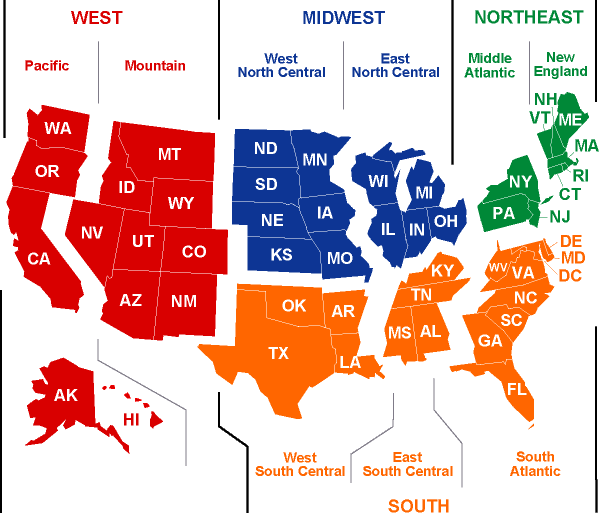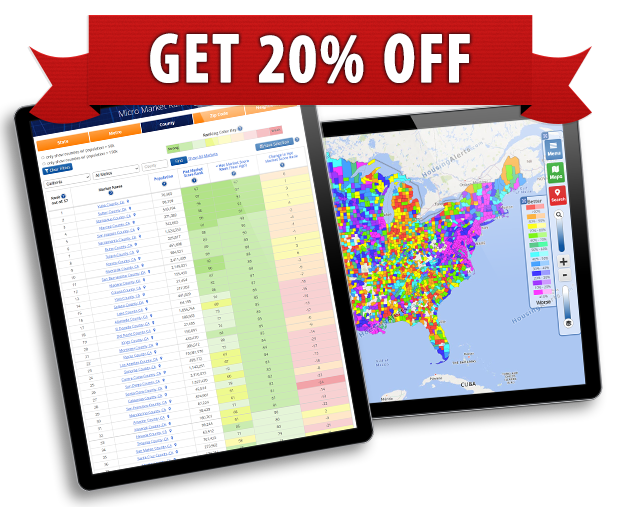Published July 18, 2017
Click Here To Grab Your FREE Account NOW!
List of the 171 DECLINING U.S. Real Estate Markets
Compared to last quarter, the total number of declining markets has improved slightly, but it’s still very alarming.
42% of all U.S. Real Estate Markets Declined Q-o-Q
Currently, 171 markets experienced ‘real’ (inflation adjusted) declines over the last three months. That’s 42% of ALL U.S. real estate.
(See the entire list of declining markets below.)
In the previous quarter 199 markets (49%) lost ‘real’ value from the prior 3-month period.
‘Quarterly’ home price comparisons are more volatile than ‘Annual’ but also act as early indicators, giving an ‘advance’ peek into what may be coming.
Unfortunately, the most recent Year-Over-Year report also showed a worrisome level of weak real estate markets. 25% of all U.S. real estate markets declined on an ANNUAL (Y-o-Y) basis.
In addition to the list of declining cities below, we also use our Advance-Decline (A-D) Indicator that aggregates and tracks Market Breadth.
Market breadth is a study used in Technical Analysis that attempts to gauge the direction of the overall market by analyzing the number of markets advancing relative to the number declining.
The A-D below is based on Quarterly data. It’s much more erratic than the Annual A-D.
The red line has already exited the top green shaded area on a Q-O-Q basis.

#1 – When the red chart line is inside the green zone it’s a bullish – or positive – outlook on the overall market.
#2 – When the red line is in the middle zone it’s telling us there is no strong bullish or bearish direction; you must rely more heavily on market-by-market selections.
#3 – When the red line is in the bottom zone, it indicates substantial weakness in the overall market.
As with all Quarterly vs. Annual comparisons, you’ll see more variance with shorter time frames. It’s common for this red line to fluctuate up and down. The importance of this indicator is when the red line reaches INSIDE the top (green) or bottom (red) zones. It’s even more significant if it STAYS in the red or green zone for multiple periods.
You can see, even with Quarterly data, this A-D Indicator has done a very good job ‘predicting’ the beginning and the end of each major National real estate cycle
This A-D Indicator can also be used on State and Regional levels for more granular insights. Paid members can customize this Advance-Decline tool by logging in and visiting: Real Estate Market Breadth Analyzer.
Below is the list of cities with declining Quarter-Over-Quarter home prices…
Note: These are 3-month percentage decline rates. Multiply by 4 to get approximate annual equivalent (at current run rate).

If your markets are on this list, DON’T panic!
ONE data point, whether it’s for a Quarter or a Year, doesn’t necessarily mean it’s time to buy, sell or hold… or do ANYTHING different, other than pay closer attention. That’s where Technical Analysis (TA) comes in.
TA is a 500 year old science used by every Wall Street investment bank and every global stock, bond, currency and commodities trading firm on the planet for TRILLIONS of dollars in DAILY trades.
We invented TA for local real estate
markets; no one can touch us when it
comes to predicting precise entry/exit times.
Check out our proven track record for maximizing gain while minimizing risk, capital and effort in ANY U.S. real estate market.
BREAKING NEWS: We’ve been rolling out some amazing new micro market tools for Wholesalers and Rehabbers. Our Neighborhood Ranking tool alone should save you thousands a month in targeted acquisition and lead generation costs.
You can now avoid all the wasted time and frustration going down dead-end paths in crummy sub-markets.
The ‘formal’ launch will be in a month or so.





















